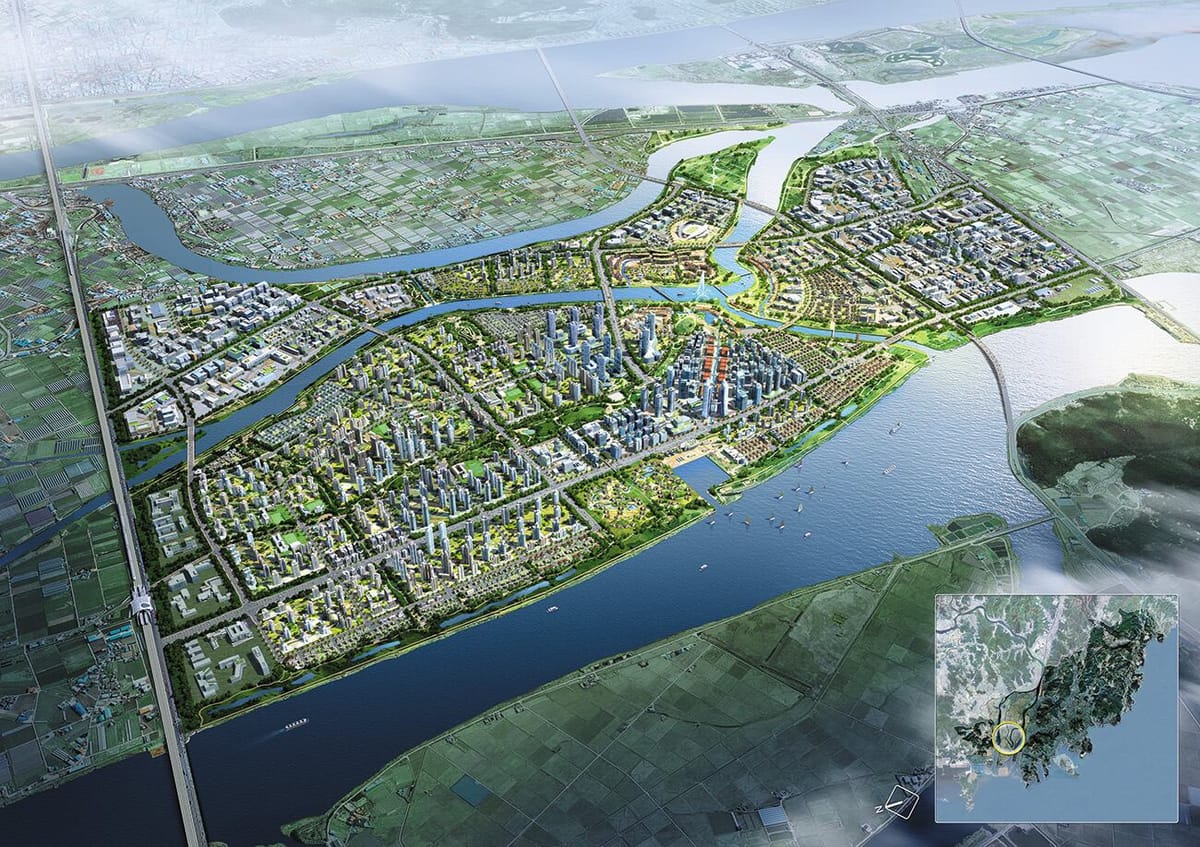Aligning West Busan’s Digital Growth with Energy Infrastructure
Eco Delta City and a wave of digital infrastructure projects are redefining Busan’s west coast. But behind the “smart” label lies a complex energy puzzle: centralized power, minimal local generation, and limited renewable deployment.

Busan, South Korea — West Busan is gradually emerging as a focal point for digital and smart-industry development. Traditionally defined by logistics operations and light manufacturing, districts such as Gangseo, Sasang, and Saha are now being explored as future sites for data infrastructure and technology-led urban growth.
According to municipal data, Busan is expected to host 24 data centers by 2030, with 20 of them currently approved or under development. More than 85% of these new facilities are concentrated in the western corridor, with Gangseo-gu accounting for the largest share. Among the most prominent projects is the Eco Delta City development, where a green data center cluster is planned with scalable design and an emphasis on energy efficiency.
City estimates project that the Green Data Center Cluster in Eco Delta City could require up to 360 megawatts of electricity upon full operation. To support this demand, the city and Korea Electric Power Corporation (KEPCO) are constructing a new substation in Gangseo-gu with a planned capacity of 1,000 megawatts, scheduled for completion in 2027.
This momentum reflects a broader national pivot toward digital transformation and artificial intelligence. However, it also exposes a structural challenge: West Busan, despite being positioned as the city’s digital core, has historically produced only a small share of its own electricity. With most of Busan’s power generated in the east, particularly near the nuclear complexes of Gijang, the western districts remain heavily reliant on long-distance transmission.
As digital facilities grow in scale and complexity, so too does the need for local energy resilience. In this context, planners and policymakers face a critical question: how to align the city’s evolving industrial strategy with a sustainable and regionally balanced power supply.
Recent urban planning initiatives and industrial policy shifts have brought new focus to West Busan as a location for digital infrastructure. The appeal lies in several factors: proximity to logistics networks, availability of undeveloped land in Gangseo-gu, and the presence of large-scale planning districts such as Eco Delta City. These conditions make the region a logical choice for data centers and smart-industry facilities that require both space and network access.
While construction timelines and operational scales vary, the trend indicates a gradual but clear shift toward digital-sector development in this part of the city. As digital infrastructure expands, so does its demand for stable, high-quality electricity. Data centers are among the most energy-intensive facilities in the modern economy, requiring continuous, uninterrupted power to maintain server operations and climate control systems.
While Busan as a whole maintains a relatively high level of energy self-sufficiency, this figure masks significant geographic disparities. The vast majority of the city’s electricity is generated in the eastern coastal region, particularly in Gijang County, where several nuclear power reactors are concentrated. This area alone accounts for a substantial portion of the city’s total power output and forms the backbone of its current supply system.
In contrast, West Busan—including Gangseo, Saha, and Sasang districts—contributes only a small share of the city’s overall power generation. The primary local facility is the Busan Combined Cycle Power Site Division, a liquefied natural gas (LNG)-fueled plant operated by Korea Southern Power (KOSPO), located in Saha-gu. Although it provides meaningful capacity to the regional grid, it is not specifically designed to support the scale of power that West Busan’s emerging digital infrastructure may eventually require.
As digital infrastructure continues to expand in West Busan, the distance between where electricity is generated and where it is consumed is becoming more consequential. High-voltage transmission lines must carry electricity across a considerable distance to reach Gangseo and other western districts—home to a growing cluster of energy-intensive facilities.
While Busan’s grid is engineered to accommodate citywide distribution, long-distance transmission introduces technical inefficiencies and operational risks. Voltage loss, line congestion, and thermal constraints can all reduce the reliability and responsiveness of the system. These issues become increasingly significant as demand grows.
Moreover, increasing supply to West Busan will require corresponding upgrades to transmission substations, transformer capacity, and regional load-balancing protocols—investments that typically demand years of planning and implementation.
Addressing the growing energy demands of West Busan will likely require a more distributed and diversified approach to power generation. One option under discussion is offshore or nearshore wind power along the western coastline. However, public concerns over landscape impact and environmental disruption have made this a politically sensitive path.
Solar energy offers a more immediate and less controversial opportunity. Industrial rooftops and public facilities across Gangseo and Saha present underutilized surfaces suitable for photovoltaic deployment. When paired with battery storage and digital control systems, these setups can help improve local reliability. Pilot-scale projects have been proposed within Eco Delta City, where smart-grid components are being tested alongside urban development.
Additionally, the city is supporting localized generation projects—including a 500MW-scale combined heat and power plant and hydrogen fuel cell installations—in coordination with KEPCO and major energy providers. These efforts align with plans to designate Eco Delta City as a distributed energy special zone under new national legislation.
Despite the growing interest in localized and renewable energy solutions, several barriers continue to limit their deployment in West Busan. Public acceptance is a key challenge, especially for wind power. Regulatory fragmentation, inconsistent permitting, and the absence of standardized financing tools also slow down implementation.
Institutional capacity is another concern. Many municipal agencies lack the technical resources or cross-sector coordination mechanisms to support complex distributed energy projects. While substation construction is underway, enabling infrastructure for decentralized systems—such as smart metering, demand-side management, and dynamic pricing—remains limited.
To fully support West Busan’s transformation, energy planning must be integrated into the broader urban development framework. This means aligning zoning, transport, and industrial policy with energy strategy, and ensuring that local authorities have the tools to coordinate across agencies and sectors.
No single solution will resolve the mismatch between rising demand and localized supply. But a deliberate mix of solar, storage, modular renewables, and adaptive regulation could bring West Busan closer to a model of energy self-reliance—one that matches the region’s digital aspirations with sustainable foundations.
Ultimately, a city’s ability to compete in the digital age will not be determined solely by bandwidth or server capacity, but by how effectively it aligns its physical infrastructure with its future ambitions. For Busan, the power to grow must also mean the power to endure.



Comments ()